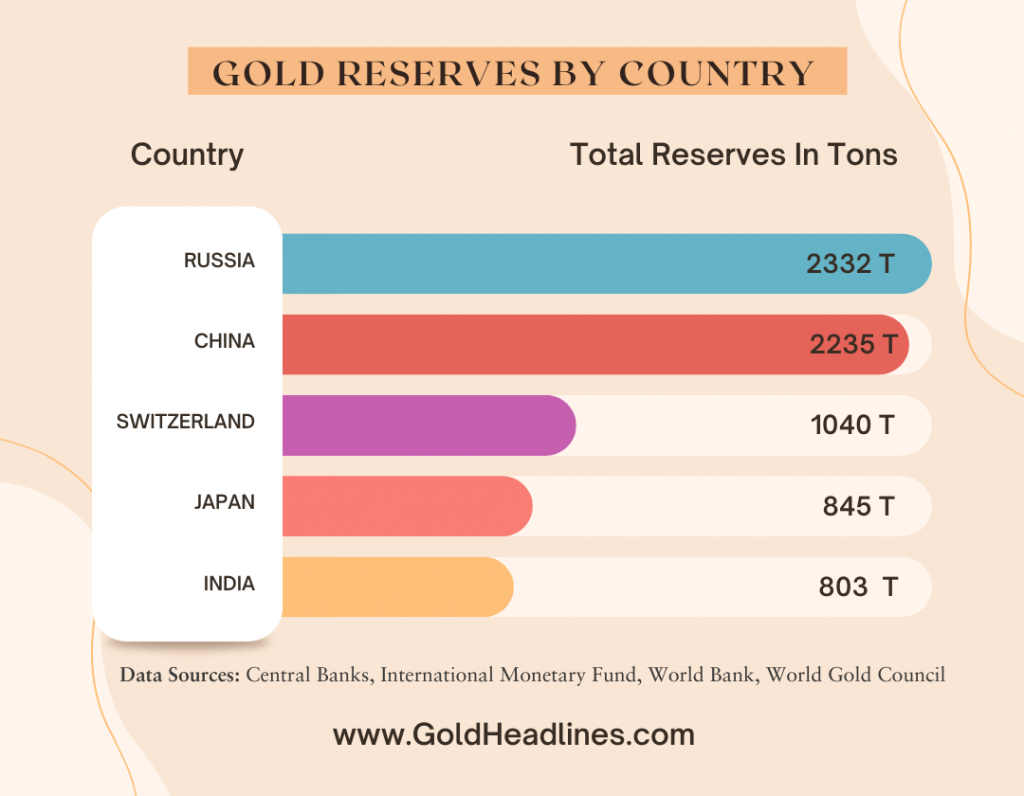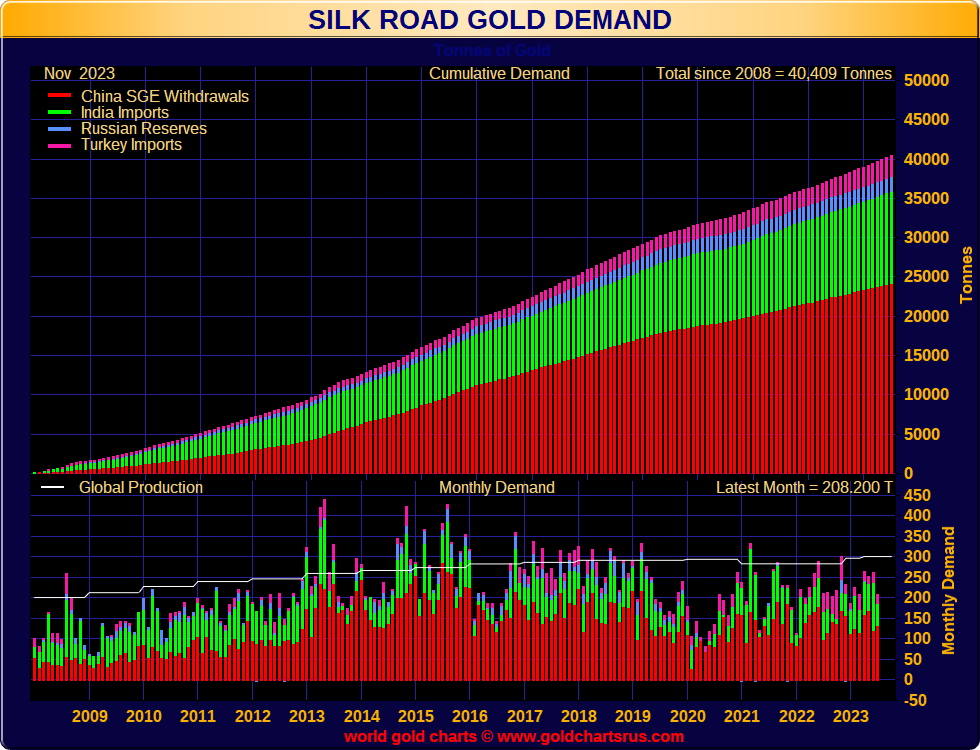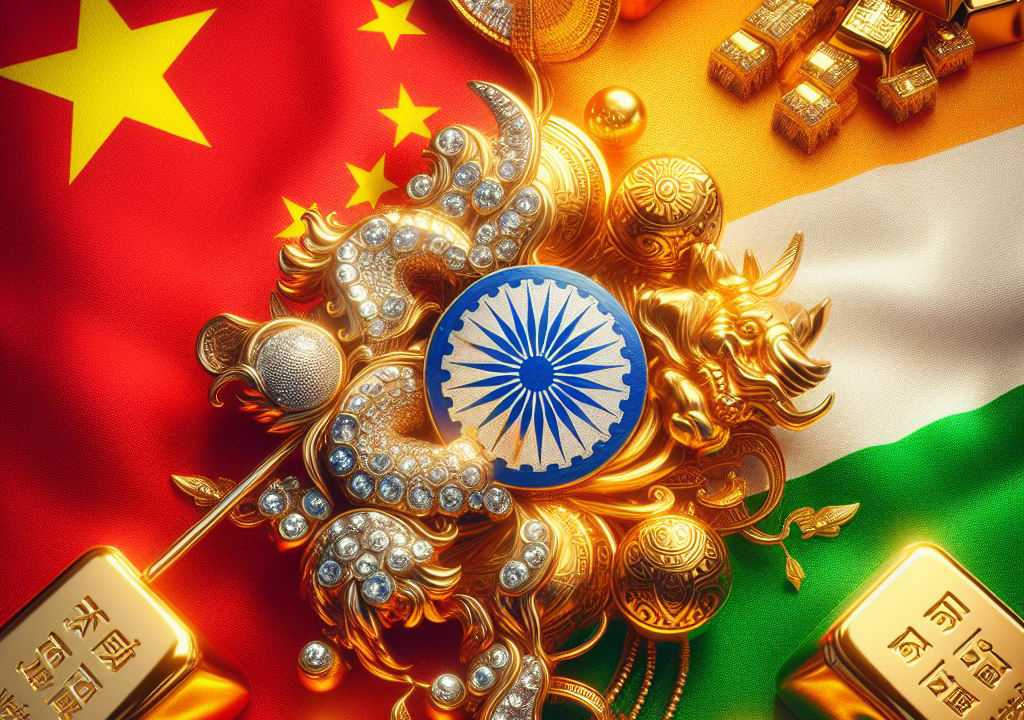Gold is one of the most precious and sought-after metals in the world. It has been used as a store of value, a medium of exchange, and a symbol of wealth and status for thousands of years. But what makes gold so attractive to two of the world’s largest and fastest-growing economies, China and India?
According to the World Gold Council, China and India accounted for almost 50% of global gold demand in 2023, with China surpassing India as the top gold consumer for the first time. Both countries have a long history and culture of gold consumption, but they also have different motivations and drivers for buying gold in the modern era.
Gold as a Hedge against Inflation and Currency Risks
One of the main reasons why China and India are buying gold is to protect themselves from inflation and currency devaluation. Both countries have experienced high inflation rates in recent years, which erode the purchasing power of their currencies. For example, India’s inflation rate is 4.91% as of Feb 2024, above the central bank’s target of 4%. While China is going through lots of bad debt in their real estate sector.
Gold, on the other hand, tends to retain its value or even appreciate in times of inflation, as it is seen as a scarce and durable asset that cannot be printed or manipulated by governments. Gold is also considered a safe haven asset, meaning that it can provide stability and security in times of economic and political uncertainty. This is especially relevant for China and India, as they face various challenges such as trade tensions, geopolitical conflicts, social unrest, and environmental issues.
Another reason why China and India are buying gold is to diversify their foreign exchange reserves, which are mostly denominated in US dollars. Both countries have accumulated large foreign exchange reserves, as a result of their trade surpluses and capital inflows. However, holding too many dollars exposes them to the risk of a depreciation of the dollar or a rise in US interest rates, which would lower the value of their reserves. By buying gold, they can reduce their dependence on the dollar and diversify their portfolio of assets.
According to the World Gold Council, China’s official gold reserves increased by 93.8 tonnes in 2023, reaching 2,159.6 tonnes by the end of the year. India’s official gold reserves increased by 14.8 tonnes in 2023, reaching 687.8 tonnes by the end of the year. Both countries are among the top 10 holders of gold reserves in the world.

Gold as a Symbol of Wealth and Status
Another reason why China and India are buying gold is to express their wealth and status. Both countries have a long cultural and historical affinity for gold, which is often used as a form of saving, gift-giving, and adornment. Gold is also associated with prosperity, prestige, and power, especially in times of economic and social uncertainty.
The rising incomes and aspirations of the middle class in both countries have increased the demand for gold as a way of expressing their wealth and status. According to the World Gold Council, China’s gold jewelry demand increased by 10% in 2023, reaching 630 tonnes, the highest level since 2015. India’s gold jewelry demand decreased by 6% in 2023, reaching 562.3 tonnes, but still remained above the five-year average.
Both countries also have a strong seasonal and festive demand for gold, which is influenced by religious and cultural factors. For example, China’s gold demand peaks during the Lunar New Year, which is celebrated with gifts of gold coins, bars, and jewelry. India’s gold demand peaks during the Diwali festival, which is celebrated with purchases of gold jewelry, coins, and ornaments.
Gold as a Source of Innovation and Opportunity
A final reason why China and India are buying gold is to explore new opportunities and innovations in the gold market. Both countries have developed a vibrant and dynamic gold industry, which includes mining, refining, trading, manufacturing, and retailing. They both countries also have a large and growing gold investment market, which includes physical gold, gold-backed exchange-traded funds (ETFs), gold futures and options, and digital gold platforms.
Both countries are also investing in research and development to improve the quality, design, and technology of gold products and services. For example, China has launched the Shanghai Gold Exchange, which is the world’s largest physical gold trading platform, and the Shanghai Gold Benchmark Price, which is the first renminbi-denominated gold price benchmark. India has launched the India Gold Policy Centre, which is a research and advocacy center for the gold industry, and the India Gold Delivery Standard, which is a quality standard for gold bars and coins.

Both countries are also embracing the potential of digital and online platforms to expand the access and convenience of gold transactions. For example, China has launched the Gold Accumulation Plan, which is a mobile app that allows users to buy and sell gold in small amounts. India has launched the Digital Gold, which is a platform that allows users to buy, sell, and store gold online.
To Sum It Up
Gold is more than just a precious metal for China and India. It is a hedge against inflation and currency risks, a symbol of wealth and status, and a source of innovation and opportunity. As the two countries continue to grow and develop, their appetite for gold is likely to remain strong and resilient, shaping the global gold market for years to come.

